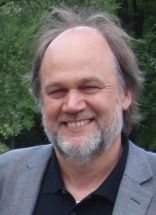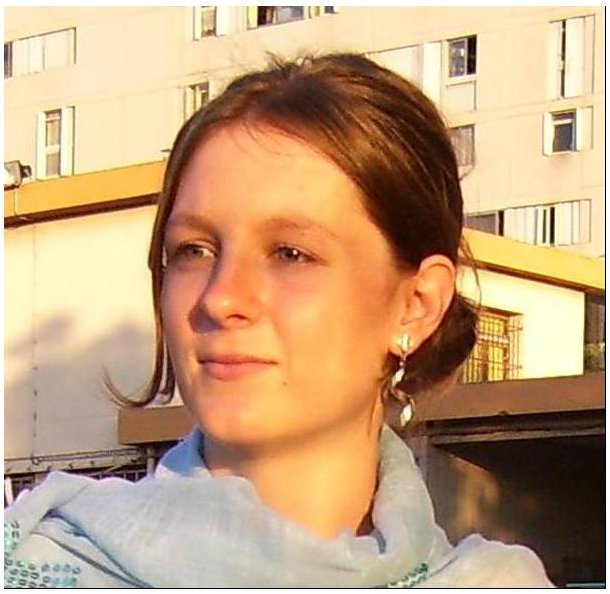Please check this site for possible changes in location or additional information.
The afternoon program is in the aula of the Main Building.
| 09:30 | coffee | |
|---|---|---|
| 09:50 | Bas Kooijman: welcome | |
| 10:00 | Volker Grimm: From individual-based modelling to Individual-based Ecology: more theory, more application | |
| 10:30 | Andé de Roos: Ontogenetic development: the unique, ecological process we tend to ignore | |
| 11:00 | coffee | |
| 11:15 | Starrlight Augustine: Using Dynamic Energy Budget theory to quantify storage and development in an animal | |
| 11:45 | Thomas Preuss: Can population modelling answer urgent unresolved questions for ecological risk assessment - lessons learnt from Daphnia | |
| 12:15 | lunch at VU restaurant (ground floor main building) | |
| 13:45 | Elke Zimmer: The pond snail under stress: interactive effects of food limitation, toxicants and copulation explained by Dynamic Energy Budget theory | |
| 15:15 | coffee/tea | |
| 15:45 | Ben Martin: Linking individual-based models and Dynamic Energy Budget Theory: lessons for ecology and ecotoxicology | |
| 17:15 | reception by Elke + Ben | |
| 18:00 | party for invitees by Elke and Ben |
 Individual-based modelling of populations has become an established tool in ecology but still has not unified ecological theory, although this was promised more than 20 years ago.
The main reason is that the inherent complexity of individual-based models (IBM) seems to prevent obtaining general insights.
On the other hand, IBMs seem to be the only approach that allows to integrate all other ways of conceptualizing ecological systems.
I will discuss strategies to make individual-based modelling more fit for unifying ecology:
striving for structural realism via reproducing multiple observed patterns, "deconstructing" models via identifying control mechanisms, and basing models on first principles.
As a result, in Individual-based Ecology the boundaries between theory and application will become porous by a shared focus on testable, real predictions.
Individual-based modelling of populations has become an established tool in ecology but still has not unified ecological theory, although this was promised more than 20 years ago.
The main reason is that the inherent complexity of individual-based models (IBM) seems to prevent obtaining general insights.
On the other hand, IBMs seem to be the only approach that allows to integrate all other ways of conceptualizing ecological systems.
I will discuss strategies to make individual-based modelling more fit for unifying ecology:
striving for structural realism via reproducing multiple observed patterns, "deconstructing" models via identifying control mechanisms, and basing models on first principles.
As a result, in Individual-based Ecology the boundaries between theory and application will become porous by a shared focus on testable, real predictions.
 Ontogenetic development of individuals between their time of birth and maturation characterizes the life history of all biological species and uniquely distinguishes the fundamental units of ecology from those in other fields of natural science.
Yet, classic ecological theory about population and community dynamics only accounts for individual reproduction and mortality and often ignores development altogether.
If individual life history is accounted for, such as in age-structured matrix models, the relation with population dynamics is mostly unidirectional, i.e. life history influences population dynamics, but not vice versa.
Theory about bidirectional influences between individual development and population or community dynamics, referred to as "eco-devo" dynamics, is scarce at best.
Growth in body size is by far the most prominent aspect of ontogenetic development.
As a consequence, development necessarily depends on the availability of food and thus on the feedback from population foraging.
We show how accounting for food-dependent ontogenetic development in population models affects basic ecological principles derived from classic theory that only accounts for individual reproduction and mortality.
Size-structured population models accounting for food-dependent growth in body size of individuals can be rigorously simplified to unstructured models only when the mass-specific rate of new biomass production through somatic growth and reproduction is independent of individual body size.
Under these restricted conditions, which we refer to as ontogenetic symmetry in energetics, development and reproduction are limited by food availability to roughly the same extent.
Ontogenetic symmetry separates two broad, more general domains with ontogenetic asymmetry, in which either juveniles or adults have a higher mass-specific net-biomass production.
In case of ontogenetic asymmetry we show that basic, well-known ecological principles no longer hold.
In particular, for consumer species ontogenetic asymmetry may lead to positive relationships between total population biomass and individual mortality.
Predators of such consumers can then increase the abundance of their prey merely by foraging on them.
The positive mortality-biomass relation also allows that a doubly handicapped consumer species, which is ousted by its competitor when competing for resources and in addition is preferentially preyed upon by a shared predator, nonetheless is the only consumer species surviving the predation pressure.
We thus conclude that basic, unstructured ecological theory only represents the very limiting case of ontogenetic symmetry in energetics and emphasize the need to consider community consequences of the more general condition of ontogenetic asymmetry.
Ontogenetic development of individuals between their time of birth and maturation characterizes the life history of all biological species and uniquely distinguishes the fundamental units of ecology from those in other fields of natural science.
Yet, classic ecological theory about population and community dynamics only accounts for individual reproduction and mortality and often ignores development altogether.
If individual life history is accounted for, such as in age-structured matrix models, the relation with population dynamics is mostly unidirectional, i.e. life history influences population dynamics, but not vice versa.
Theory about bidirectional influences between individual development and population or community dynamics, referred to as "eco-devo" dynamics, is scarce at best.
Growth in body size is by far the most prominent aspect of ontogenetic development.
As a consequence, development necessarily depends on the availability of food and thus on the feedback from population foraging.
We show how accounting for food-dependent ontogenetic development in population models affects basic ecological principles derived from classic theory that only accounts for individual reproduction and mortality.
Size-structured population models accounting for food-dependent growth in body size of individuals can be rigorously simplified to unstructured models only when the mass-specific rate of new biomass production through somatic growth and reproduction is independent of individual body size.
Under these restricted conditions, which we refer to as ontogenetic symmetry in energetics, development and reproduction are limited by food availability to roughly the same extent.
Ontogenetic symmetry separates two broad, more general domains with ontogenetic asymmetry, in which either juveniles or adults have a higher mass-specific net-biomass production.
In case of ontogenetic asymmetry we show that basic, well-known ecological principles no longer hold.
In particular, for consumer species ontogenetic asymmetry may lead to positive relationships between total population biomass and individual mortality.
Predators of such consumers can then increase the abundance of their prey merely by foraging on them.
The positive mortality-biomass relation also allows that a doubly handicapped consumer species, which is ousted by its competitor when competing for resources and in addition is preferentially preyed upon by a shared predator, nonetheless is the only consumer species surviving the predation pressure.
We thus conclude that basic, unstructured ecological theory only represents the very limiting case of ontogenetic symmetry in energetics and emphasize the need to consider community consequences of the more general condition of ontogenetic asymmetry.
 Dynamic Energy Budget (DEB) theory is a mechanistic theory which specifies uptake and use of substrate for all organisms.
The theory partitions the biomass of an organism into two distinct types of material: reserve and structure.
The former is metabolically inert and the latter is metabolically active (needs to be maintained).
An animal assimilates its food into a reserve;
the mass/ energy for the reserve is mobilized to fuel all metabolic processes:
growth, somatic maintenance, maturation then reproduction and maturity maintenance.
Maturation is energy invested into developing up to puberty;
after puberty energy allocation to maturation stops and to reproduction starts. The concepts of reserve and of maturation are abstract and not (yet) directly measurable.
In this talk I will illustrate through examples how certain types of data can give quantitative information on the dynamics of both reserve and of maturation. Both of these processes are ecologically relevant and may impact population level dynamics.
Dynamic Energy Budget (DEB) theory is a mechanistic theory which specifies uptake and use of substrate for all organisms.
The theory partitions the biomass of an organism into two distinct types of material: reserve and structure.
The former is metabolically inert and the latter is metabolically active (needs to be maintained).
An animal assimilates its food into a reserve;
the mass/ energy for the reserve is mobilized to fuel all metabolic processes:
growth, somatic maintenance, maturation then reproduction and maturity maintenance.
Maturation is energy invested into developing up to puberty;
after puberty energy allocation to maturation stops and to reproduction starts. The concepts of reserve and of maturation are abstract and not (yet) directly measurable.
In this talk I will illustrate through examples how certain types of data can give quantitative information on the dynamics of both reserve and of maturation. Both of these processes are ecologically relevant and may impact population level dynamics.
 In cases where the protection goal is the population or the community, ecological modeling has the potential to provide more relevant endpoints than a risk assessment (RA) relying only on exposure and on ecotoxicological endpoints derived from single species tests.
A survey carried out by the SETAC Europe Advisory group MeMoRisk identified the following questions as most relevant for use of ecological models in RA.
Extrapolations of effects:
1) from individual to population;
2) between different exposure scenarios;
3) from laboratory to field conditions; and
4) prediction of recovery patterns under field conditions.
In cases where the protection goal is the population or the community, ecological modeling has the potential to provide more relevant endpoints than a risk assessment (RA) relying only on exposure and on ecotoxicological endpoints derived from single species tests.
A survey carried out by the SETAC Europe Advisory group MeMoRisk identified the following questions as most relevant for use of ecological models in RA.
Extrapolations of effects:
1) from individual to population;
2) between different exposure scenarios;
3) from laboratory to field conditions; and
4) prediction of recovery patterns under field conditions.
Here, an individual based population model for Daphnia magna (IDamP) was used to investigate these topics. Three effect models (immediate response model, damage assessment model, and time weighted average model) were used to describe the toxicity under variable exposure regimes both on individual level and (via linking the effect model to IDamP) on population level. In order to extrapolate from laboratory to field conditions, it is necessary to take the dynamics of environmental conditions into account. To achieve this, a complex ecosystem model (StoLaM) was used to simulate a realistic environment for IDamP. The model predictions were tested against empiric data at different levels of biological organization, namely individuals, populations and ecosystems.
The ability of IDamP to predict effects of toxicants at population level on the basis of effect data for individuals was validated for two pesticides and different exposure scenarios. Comparisons of model predictions with data from several untreated mesocosms demonstrated that the model gives good predictions of the general Daphnia population dynamics in field situations. The suitability of the model approach to predict time to recovery of an affected population was tested by comparing model predictions with a dataset from a mesocosm treated with an insecticide that caused pronounced adverse effects on daphnids.
In this study, it was demonstrated that mechanistic modelling is valuable tool for answering urgent questions in RA.
The sensitivity of populations, as well as population sustainability, can be predicted for different environmental conditions.
For doing so it is necessary to include the main driving factors of population dynamics into the model approach, including toxicokinetics, toxicodynamics, life history, interaction with food source and impact of temperature.

| 13:45 | welcome by Herman Verhoef (Rector Magnificus) in Aula | |
|---|---|---|
| promotores Bas Kooijman, copromotores Tjalling Jager and Virginie Ducrot | ||
| 13:45 | Introduction Elke Zimmer | |
| 13:55 | Dr. T. (Thomas) Preuss | |
| 14:05 | Prof. Dr. P. (Paul) van den Brink | |
| 14:15 | Dr. S. (Starrlight) Augustine | |
| 14:25 | Dr. C. (Cor) Zonneveld | |
| 14:35 | Dr. J. (Joris) Koene | |
| 14:45 | end of defence | |
| 15:15 | end of ceremony |

| 15:45 | welcome by Herman Verhoef (Rector Magnificus) in Aula |
|---|---|
| promotores Bas Kooijman & Volker Grimm, copromotores Thomas Preuss and Tjalling Jager | |
| 15:45 | Introduction by Ben Martin |
| 15:55 | Dr. M. (Matthijs) Vos |
| 16:05 | Dr. V. (Virginie) Ducrot |
| 16:15 | Prof. Dr. A. (André) de Roos |
| 16:25 | Dr. S. (Starrlight) Augustine |
| 16:35 | Dr. B. (Bob) W. Kooi |
| 16:45 | end of defence |
| 17:15 | end of ceremony; drinks |